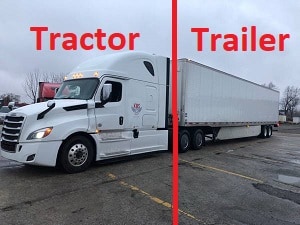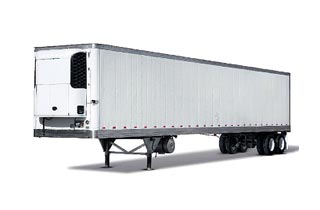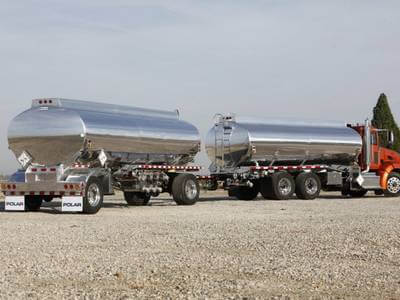Spinward Flow
SOC-14 5K
Let me give you a picture to help you understand.But if you maneuver or jump while retaining them, you are at the full tonnage and therefore should be required to have the appropriate bridge and computer.

If you unhitch the trailer, does the crew cab/bridge on the tractor get smaller?
Does it need to get smaller?
If you hitch a trailer to the tractor, does the crew cab/bridge on the tractor need to get bigger?
Does it need to get bigger in order to manage/handle the trailer?
Now consider that it is perfectly possible for the Trailer to have both larger dimensions (displacement) and also larger mass (tonnage) than the Tractor does when loaded (just ask any trucker). And yet the Tractor is designed to have the external item ... the Trailer ... attached to it.
Does engine performance degrade/reduce with a Trailer attached?
Of course (especially if the trailer is loaded)!
Does the design of the Tractor "care" what kind of Trailer it is pulling?
Can the Trailer be one of these?

Or one of these?

What difference do those choices/options make to the Tractor pulling them?
The rules ought to reflect the in-game reality ... rather than the in-game reality being circumscribed by the rules to the minutest detail.
Remember @kilemall ... you're basically taking the stance that the "towing capacity" of any spacecraft is effectively ZERO ... because there isn't a rule telling you otherwise ... except for the already existing example of the Gazelle class and the Brown class starships which were built and published under CT. The only thing that was missing was a clear set of rules to handle external towing capacity for starships (starting with F=MA newtonian physics, which were used in LBB2.77 to determine transit times and distances). It is something that needs to be inferred and understood, owing to the fact that the LBBs failed to provide adequate verbiage explaining the procedure.
The way I handle these things is to figure "if this drive was used in a larger ship tonnage class, how much performance could this drive deliver from that larger load?"
So a 10 ton LBB5.80 maneuver drive can deliver 2G in a 200 ton form factor (200*0.05=10) ... or 1G in a 500 ton form factor (500*0.02=10). Same drive tonnage, different "hauling capacities" depending on loading.
Therefore, a 200 ton ship with a 2G drive can maneuver itself at 2G without an external load ... or maneuver at up to 1G with 1-300 tons of external loading (for a total of up to 500 tons).
The same methodology applies to jump drives, using the LBB5.80 formulas.
For LBB2 drives, it's just a matter of using the lookup table to figure out how drive performance "falls off" as external loads get added onto the ship.
The bridge is sized (2%, minimum 20 tons) to the displacement of the ship's PERMANENT HULL ... not including any external loads that can be temporarily added at any time (kind of like how Trailers can be temporarily hitched to Tractor without being a permanent non-removable part of the Tractor). When you add a temporary external load to a starship, that temporary addition is not becoming a permanent part or feature of the hull that can never be removed or jettisoned.
